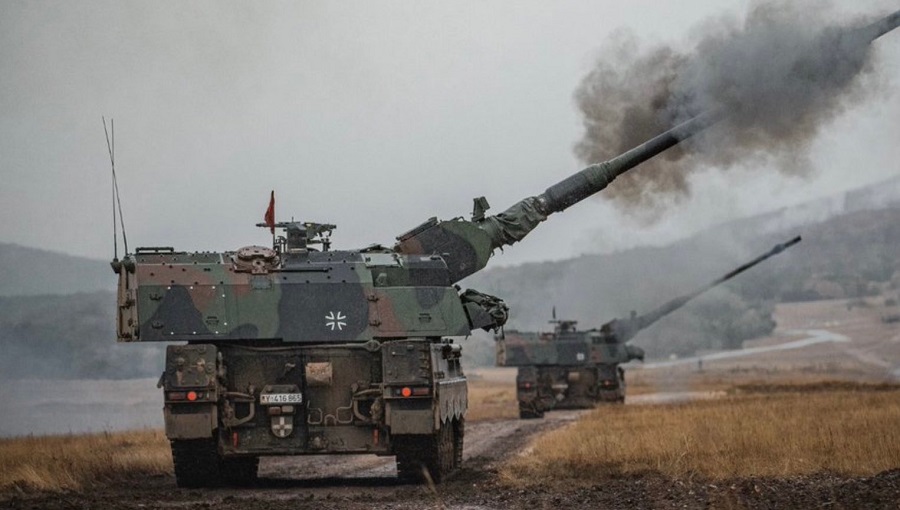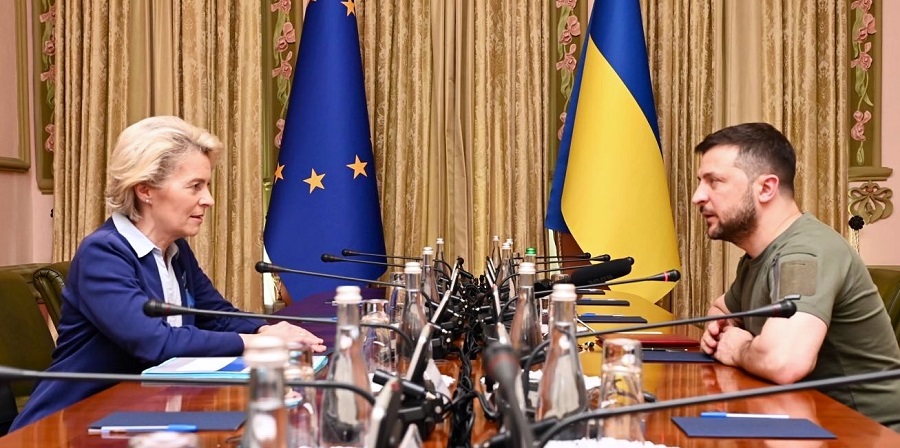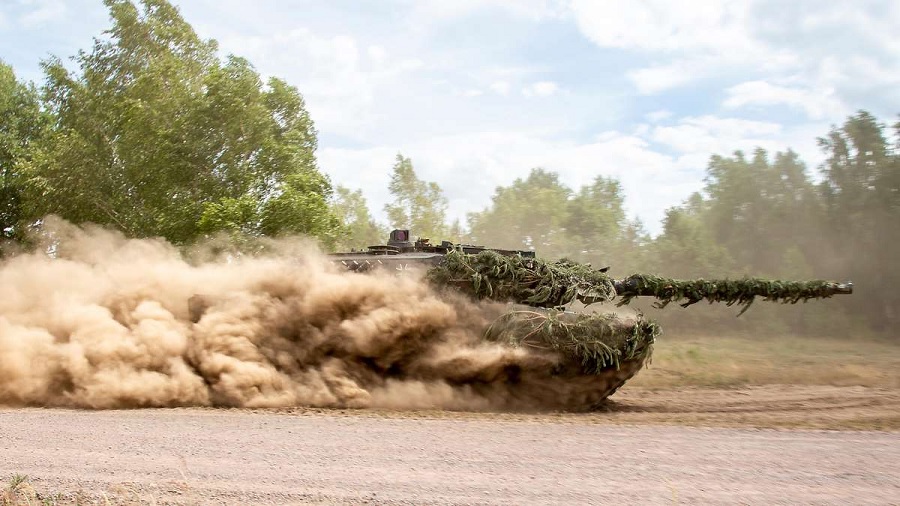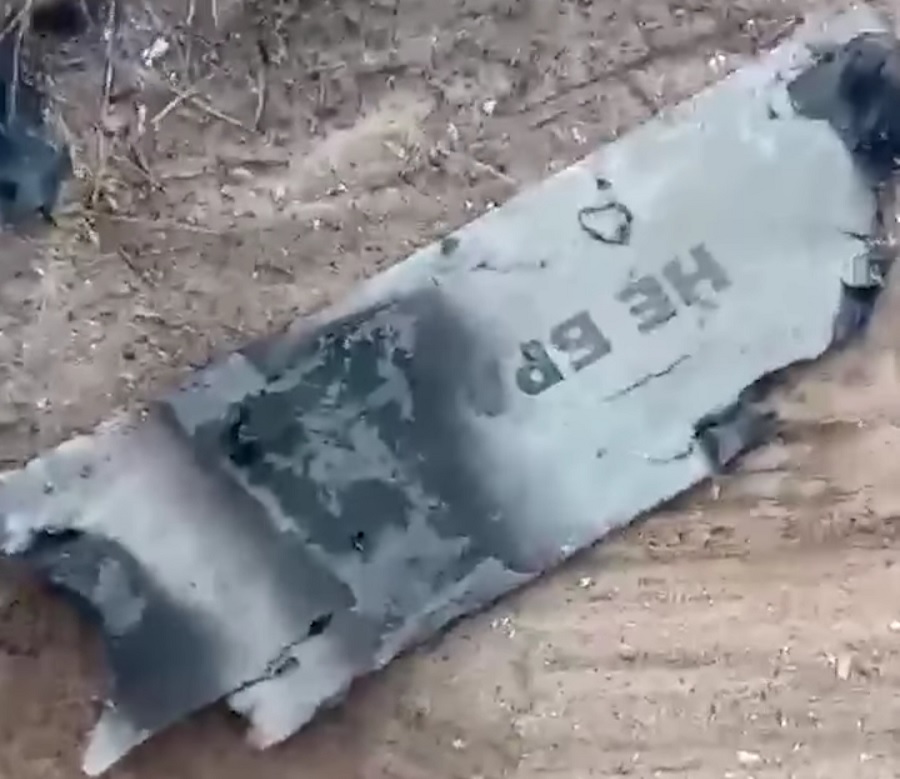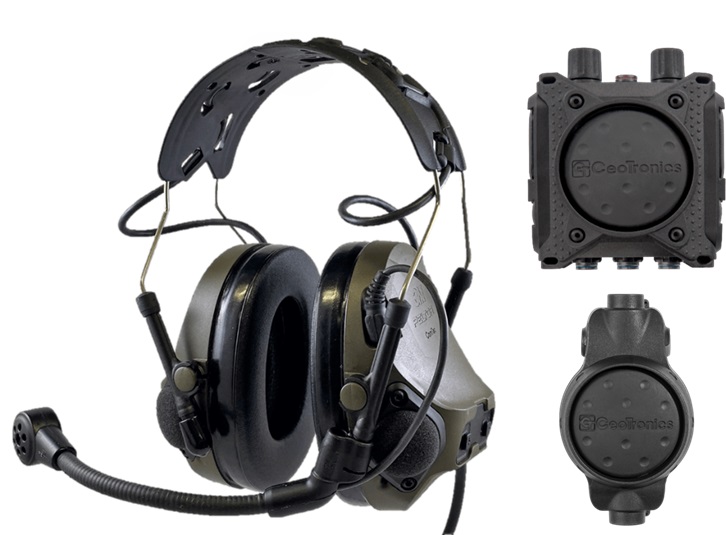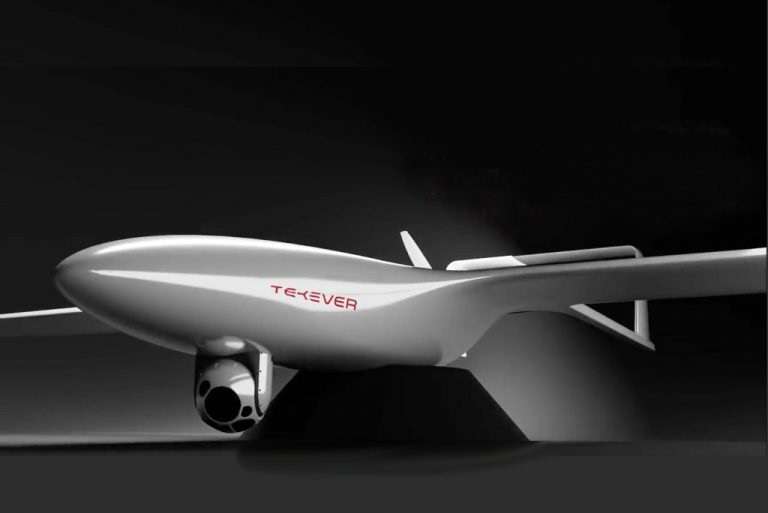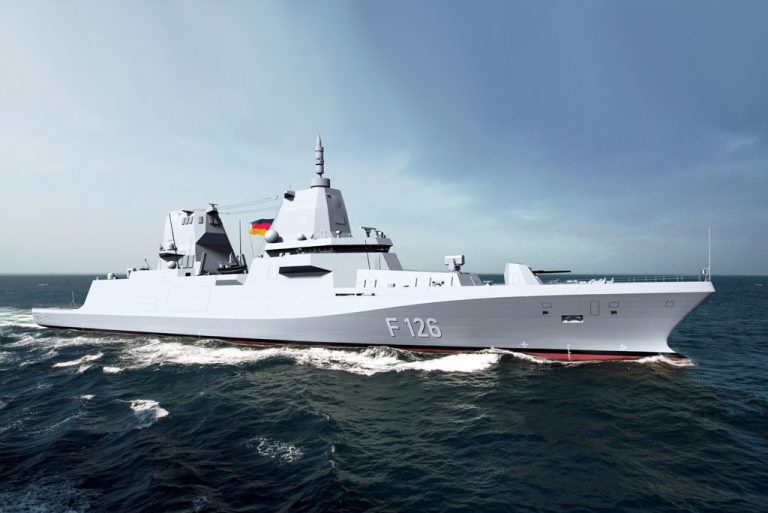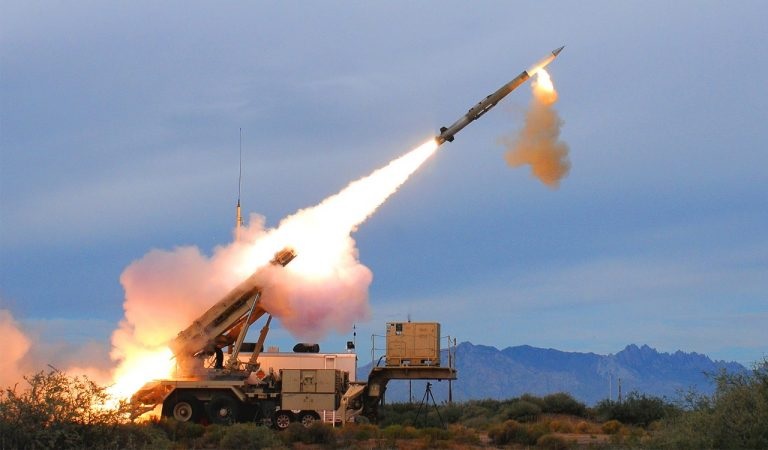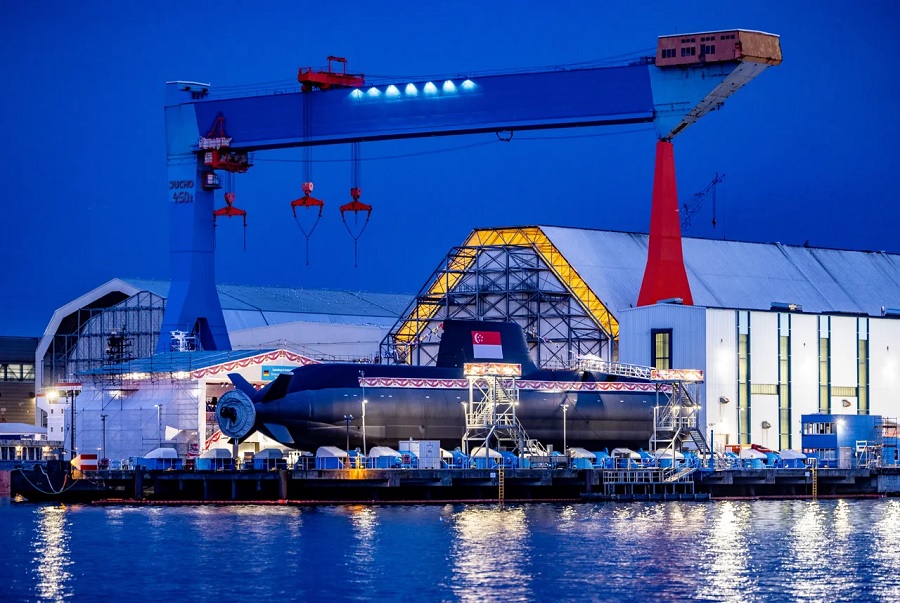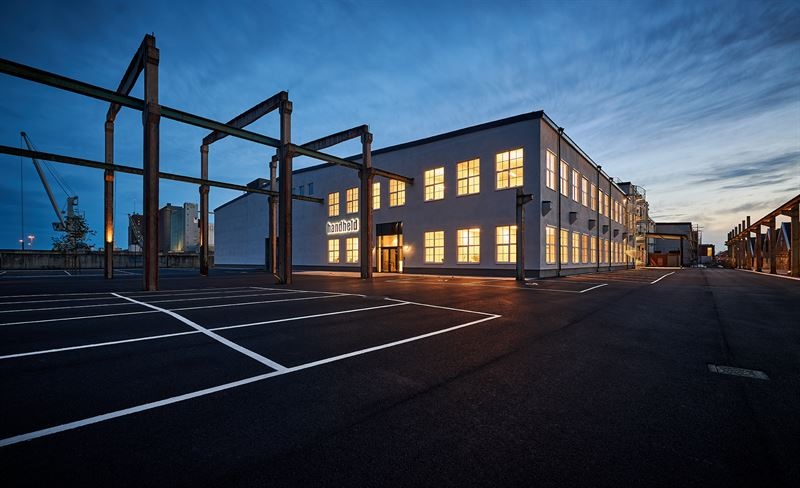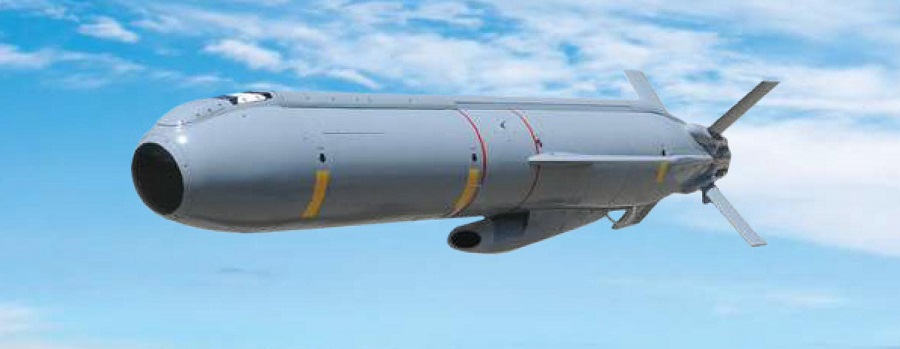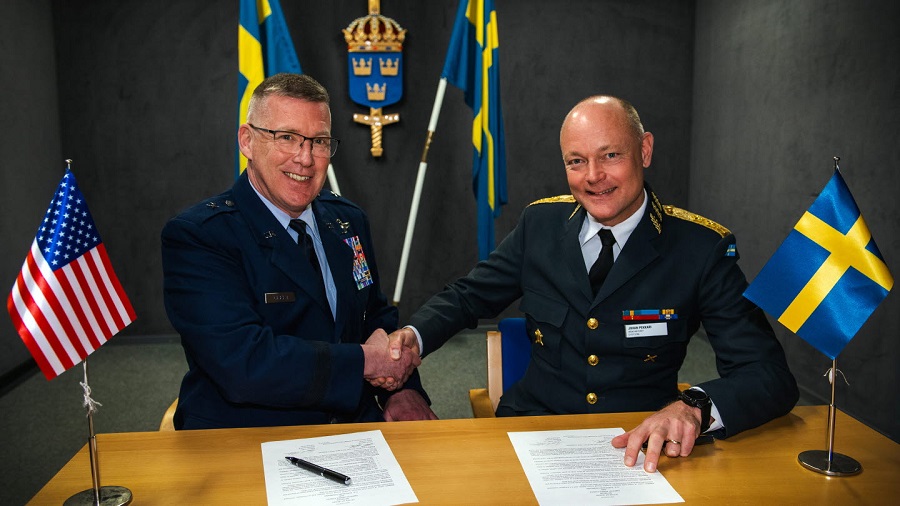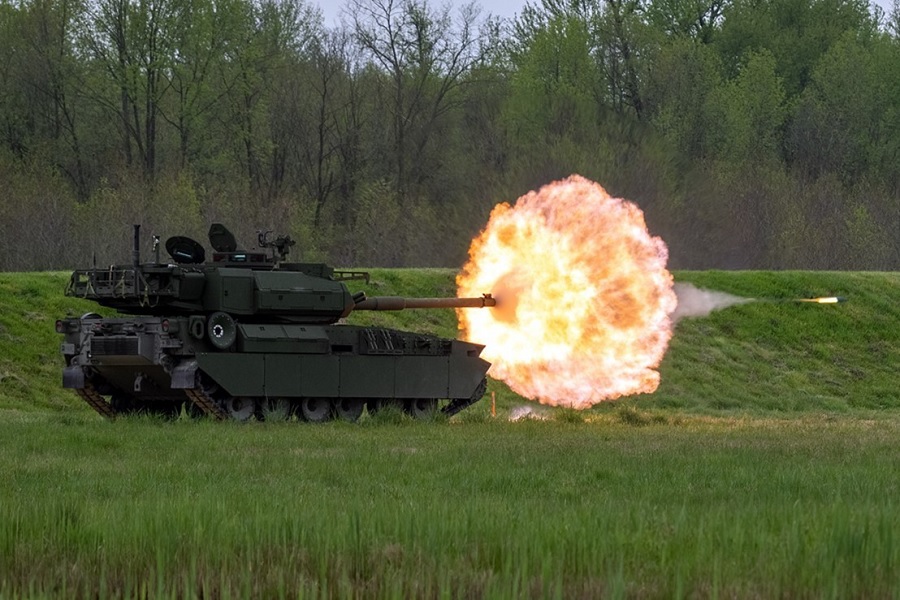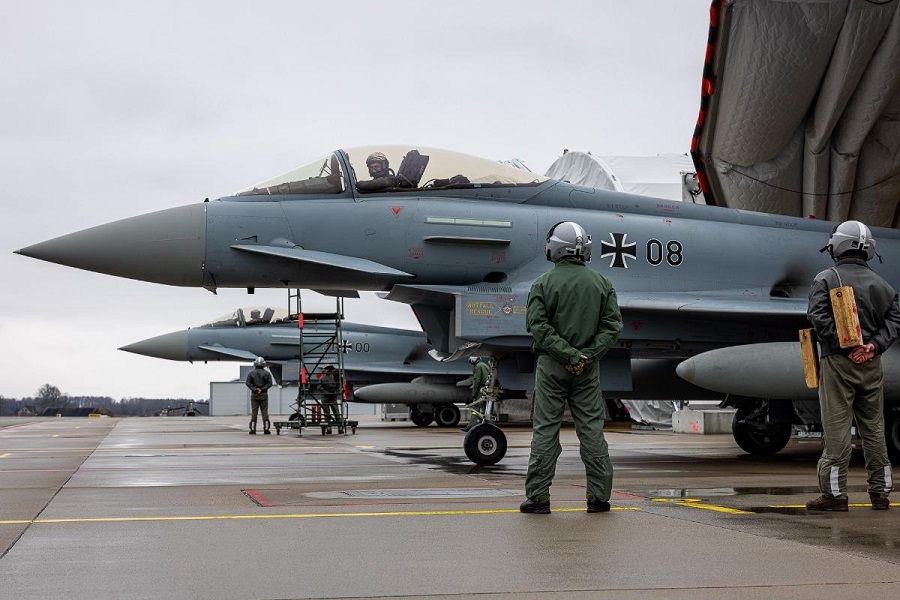Summary
- Ukraine’s response to Russian aggression in 2022 holds valuable lessons for the EU and its member states.
- Since 2014, Ukraine has transformed its armed forces, mobilised a network of reservists, and coordinated military and civilian defence agencies to prioritise cross-society resilience to crises.
- It has done so by adopting NATO best practices and through a unique movement of volunteers who help fund the war effort.
- The Ukrainian armed forces have also found innovative ways to use new technologies in mounting an asymmetric response to their much larger adversary.
- EU member states can learn from Ukraine’s experiences, but this should be a two-way street – with European countries continuing to supply weapons and provide training to Ukraine, and gaining real-world wartime insights in return.
Introduction
Ukraine’s response to the Russian invasion holds vital lessons for the rest of Europe. Kyiv has placed cross-society resistance at the heart of its national defence, bringing all military and security agencies under a single command, assisted by support from the civilian population. Since 2014, the country has transformed its armed forces, upgrading logistics and communications and empowering mid-level officers; put in place a network of reservists; and taken measures to ensure Ukrainian society’s broader resilience to crises. It built this approach both on the adoption of NATO best practices and on a unique movement of volunteers who raise funds to support the war effort, merging defence and measures to increase national resilience into a single system.
This constitutes a ‘third way’ between the ‘total defence’ model of Sweden, Finland, Singapore, and Switzerland, which brings together military and civilian actors in a whole-of-society approach to security; and the strongly hierarchical model of the United States, Russia, and China, where decision-making is centralised in the political leadership. The total defence approach concentrates on defence and deterrence, while Ukraine’s approach also prioritises resilience – including a comprehensive but agile coordination of a variety of forces within and beyond the government.
Europeans should learn from this. Countries across the continent have struggled with the question of how to coordinate their security and defence agencies – particularly across civilian and military bodies – in the face of terrorist attacks and cases of malign foreign influence, but no EU member state has recently had to test their systems in war. This learning should be a two-way street, with Europe delivering arms and training to Ukraine, and in return learning from the Ukrainian experience of building a system of national resilience and defence.
The evolution of Ukraine’s defence
Ukraine’s defence has evolved over eight years of war from an ‘anti-terrorist operation’ to a ‘joint forces operation’. The government has placed the armed forces and law enforcement agencies under a single command; and then, after the February 2022 Russian invasion, created a de-facto “total defence system”. That system brought together all the activities needed to prepare for war, across both military and civil defence organisations, to build the resilience of society as a whole. However, Ukraine’s model has never been the classic total defence approach taken by other countries, as it has both a bottom-up and top-down approach – with government and society being equal partners.
Some of these changes took place in an ad hoc way as Kyiv responded to the situation on the ground, while others were the result of implementing lessons learned from prior experience and from partners. Based on the Ukrainian authorities’ analysis of the scope of military activities, the priority of threats, and the forces needed to respond, they have coordinated capabilities and the forces on the ground, including a wide range of military, paramilitary, and civilian forces. Although the role of volunteer movements in supporting armed and law enforcement forces involved in combat has been ad hoc and often anarchic – made up of many individual initiatives without centralised direction – the use of state agencies, such as the security service (the country’s domestic counter-intelligence and policy agency) and the national guard, has required clear coordination and hierarchy.
Anti-terrorist operation
In April 2014, in response to Russia’s annexation of Crimea, Ukraine’s acting president, Oleksandr Turchynov, announced an “Anti-Terrorist Operation with involvement of the Armed Forces”, to prevent Russia from “repeating the Crimean scenario in the Eastern region of Ukraine”. It was launched under the “Law on Fighting Terrorism”, under the command of the security service’s anti-terrorist centre. The government launched an anti-terrorist operation instead of a military one – despite the evidence of Russian military involvement in combat in Slovyansk in the Donetsk region – in part because “separatism” is covered by national counter-terrorism legislation. It was also unwilling to announce martial law ahead of the presidential election expected the following month.
There were constantly evolving legal and organisational problems with the anti-terrorist operation – including questions concerning when the armed forces could use weapons in peacetime, how to give orders on the ground in cases of direct armed combat, and whether to provide veteran status for those involved. Under the law, anti-terrorist operations must be for a limited period, but Russian aggression and occupation of parts of Ukrainian territory has continued for years. In 2017, calls began for a change to the format of the operation to better coordinate forces on the ground and conduct missions. Turchynov, by then secretary of the National Security and Defence Council, commented that Ukrainian law was based on a twentieth-century conception of war that was not appropriate for responding to Russia’s hybrid methods. There was consensus that a new format was needed to protect Ukraine from hybrid threats, and – having already recognised the occupied status of some territories in previous years – to set state policy on their liberation. For that, the president needed the right to use the armed forces and other militarised units – such as the national guard and the security services – against Russia’s hybrid aggression.
Joint forces operation
As a result, in 2018 the anti-terrorist operation was replaced with a joint forces operation (JFO) under military command, through a new “Law on De-occupation”. In part, this was a recognition that the adversary were primarily regular Russian military personnel, as opposed to so-called separatists, with an advanced command and control system. The move transferred command from the security service to the general staff of the armed forces; established a new post of JFO commander, appointed by the president; and placed all branches of the armed forces and law enforcement agencies under his command in the JFO’s zone of operation, which is around the occupied territories.
This allowed for better coordination of forces on the ground under a single command, as well as cooperation with military-civilian administrations – special local government bodies set up since 2015 as part of the anti-terrorist operation. It also facilitated international cooperation, including on training and equipment for the military, as well as for law enforcement agencies. The law gives the general staff the power, with agreement of the agencies’ heads, to draw on the resources – such as personnel, military bases, weapons, and means of communication – of the armed forces and a wide variety of other intelligence, police, and civilian agencies.
The two operations had different goals. The JFO was intended to liberate the occupied territories, while the anti-terrorist operation aimed to counter terrorist threats across Ukraine’s territory. These threats did not disappear in 2018. Sabotage, counter-intelligence, propaganda, Russia-provoked separatism, and illegal militant groups were still present, requiring a response not only from the military but the security service and police. So, despite the formal change from one operation to the other, the relevant agencies still carried out the functions of the anti-terrorist operation. At the same time, the new legislation allowed coordination of the various agencies under a single command in the zone of operation – particularly those who had the capacity to take part in military activities.
Total defence system
The JFO officially ended on 24 February 2022, as it had covered only some territory in the east of Ukraine, while the new wave of Russian aggression targeted the entire country. Previous legislation and activities under the JFO had helped to establish coordination between the agencies under armed forces command, and the introduction of martial law brought additional clarity around the use of forces, resources, and the command hierarchy.
However, though the coordination of agencies in the field has been broadly established, coordination at the highest level still needs adjustment. This has been a problem for many years, both in terms of inter-agency coordination and the division of functions between the Ministry of Defence and the general staff, leading to many scandals caused by the duplication of functions or absence of clarity. For 30 years, Ukraine usually lacked a truly civilian defence minister. The post was occupied by retired military personnel, who saw their role as being not only to manage resources and develop policy but to command the military. In 2021, President Volodymyr Zelenskyy appointed General Valerii Zaluzhnyy as commander-in-chief of the armed forces and former corporate lawyer Oleksiy Reznikov as minister of defence, opening a way to transform the division of responsibilities that has yielded important results this year.
Reznikov stated in August 2022 that, although his predecessors had made considerable progress, there were still factors preventing harmonious interaction between the Ministry of Defence, as a civilian state body that formulates policy and conducts the military-political and administrative management of the armed forces; and the general staff, as a body of military management. Reznikov argued that addressing these would require changes to legislation, a redistribution of functions, and the eradication of duplication – as well as an evolution of the culture of interaction, which would require time and changes in personnel.
Structural Transformations
In 2022, Russia’s semi-covert involvement in east Ukraine became open aggression. But Ukraine’s approach had also changed since 2014 and 2018. This was due to the country’s implementation of NATO standards, and its introduction of territorial defence forces two months before the invasion. Both factors have played an important role on the ground, where it has not always been possible for forces in the field to receive direct orders from headquarters.
NATO standards
Military experts usually emphasise two key types of differences between Russian and Ukrainian forces – middle-level command and communications, and logistics. These have both been priority areas of support from NATO and its members since 2014. Although in the early days of the invasion NATO officials seemed incapable of communicating how they were supporting Ukraine, mostly stressing what the alliance could not do, this support has been vital. As Reznikov has stated, when preparing its invasion Russia failed to take into account how much Ukraine’s armed forces had changed since 2014 – given that the country had been in a de-facto state of war for eight years, gaining combat experience and learning from NATO’s best practices. In 2021, Ukraine accelerated its adoption of NATO standards, particularly on logistics, communications, and the use and training of troops.
At the 2014 NATO summit in Wales, the alliance agreed to provide Ukraine with several ‘trust funds’. These are mechanisms through which member states can provide resources for specific projects in the recipient country. They included a fund on logistics and standardisation, and another on command, control, communications, and computers (C4). In 2016, these areas of focus were confirmed and broadened in the “Comprehensive Assistance Package”, which aimed to consolidate and enhance NATO assistance to Ukraine.
The logistics and standardisation trust fund included an initiative to improve supply chain management – which is important in ensuring cost-efficient inventories, an accurate operational picture, and accountability, as well as for saving time. It aimed to enhance logistics performance by testing improvements to the logistics supply chain on a small scale, focusing on an improved and modernised supply chain command and control system, warehouse management, and materiel distribution and (re)supply. Despite recent reforms, Ukraine’s logistics systems still have many weaknesses and a shortfall of funding. However, based on NATO principles of procurement and distribution, the reforms have allowed effective coordination of supply at long distances, including through the digitalisation and automation of processes.
Ukraine’s introduction of Logistics Functional Area Services – a suite of tools used to support NATO logistics processes for strategic movement and transportation, multinational deployment planning and execution, in-theatre movement scheduling, and sustainment planning – created the basis for the transparency and trust that is important when receiving weapons from partners. It helped ensure the fast delivery of weapons supplied by partners to the Ukrainian frontline, including through the establishment of the EUCOM Control Center-Ukraine/International Donor Coordination Centre. It also helped to debunk Russian propaganda about the supposed diversion of Western weapons to the black market. It is important to note that Ukraine’s volunteers have played an important role in supplying to the armed forces – without their support, supply at such a speed and scale would have been impossible.
The initial focus of the C4 trust fund was to establish secure communications systems, which Ukraine had lacked in 2014. In particular, NATO’s provision of secure tactical communications systems and commercial satellite communications has played an important role. By contrast, most Russian forces either had outdated communication systems or used personal mobile phones, whose communications were easily intercepted. This led to poor coordination between Russian units and limited communication between the military leadership and those the ground. Although Moscow has 102 military satellites in orbit, the efficiency of its battlefield reconnaissance, surveillance, targeting, and command-and-control systems seems lower than expected for a country with a space programme.
The Ukrainian armed forces have aimed to minimise such risks. Their care to establish secure communications, as well as the use of Starlink technology – a satellite internet constellation that has enabled communications, as well as drone use for reconnaissance and even on the battlefield – have brought Ukrainian forces tactical superiority in many cases. The need to receive satellite information from partner states was also significant in pushing Ukraine to prioritise the security of its communications. The purchase of the Finnish-produced ICEYE satellite for the armed forces in August further contributed to their superiority, as these satellites collect information using synthetic aperture radar that allows them to gather images at night and does not depend on weather conditions. Moreover, satellite ownership permits quicker access to information.
But regardless of military equipment, it is people who make the real difference on the ground. For years, NATO-Ukraine cooperation aimed to reform the hierarchical relationships within the Ukrainian armed forces. There were two key problems. First, there was an absence of leadership skills at the middle level, as initiative and responsibility had not been encouraged in the Soviet army, meaning troops tended to wait for direct orders from the top. That was one of the reasons for the Ukrainian military’s poor performance in Crimea in 2014, as many units waited days for instructions from Kyiv. Second, there were excessive numbers in the top military ranks, with too few professional sergeants. To tackle this, Ukraine adopted in February 2022 the “Concept of developing a professional sergeant corps the Armed Forces of Ukraine”, replacing a 2016 edition of the policy. The goals of this effort were to advance professional training, skills, and social benefits, as well as interoperability with NATO.
The Russian army, meanwhile, is heavily centralised and hierarchical, lacking empowered Western-style junior officers. As one Russian government source has stated: “There are too many colonels, too few corporals. So, what happens is tasks requiring resolution, which in the West would be resolved at much lower levels, get passed up the chain for decision.” This is backed up by other military experts who have stressed that the Russian command has shown an unwillingness to delegate authority to junior officers. As one analysis put it, this system means not only that generals tend to feature more in combat and therefore are vulnerable to attack, but also that junior officers lack the experience to command battlefield operations. Many commentators have cited a lack of non-commissioned officers (NCOs) as the key personnel weakness of the Russian military. The Russian armed forces have contract NCOs, but these soldiers do not have leadership roles with responsibilities or a division of duties with the commanding officer.
Ukraine’s case is different, in part as a result of reforms since 2014. As Colonel John Barranco of the Atlantic Council has put it, the Ukrainian military has good leadership at the lower level. The adoption of NATO standards has helped Ukraine to appreciate the important role played by non-commissioned officers. There is still debate about the impact of this factor, as Ukraine has not completed the reform of its NCO corps. However, the country holds a clear advantage in terms of competent leadership by NCOs, which is consistent with US military doctrine and training. The US puts a lot of focus on building a professional, non-commissioned officer corps of corporals and sergeants who understand the big picture and are delegated the authority to make decisions on the battlefield as they lead their units.
In addition, many Ukrainian commanders are relatively young, and many – including the commander-in-chief of the armed forces – have built their careers in an independent Ukraine, not under the Soviet Union, and have combat experience. As a result, there is a new generation of Ukrainian leaders with a distinct national identity, vision, and values. Many battles in this conflict have demonstrated the need to make quick decisions, independent judgements, and sometimes operate independently when forces have not been able to coordinate with higher rank officers. Giving lower-level commanders the right to make their own decisions based on the situation on the ground marks a significant difference between Ukrainian forces’ performance in 2022 and in 2014. This has facilitated agile ad hoc coordination between forces on the ground, without the need to coordinate via headquarters. The defence of Mariupol and Azovstal was an example of this type of coordination and cooperation between the army, navy, national guard of the interior ministry, and the police. Isolated from central command, these forces made many decisions independently and cooperated with each other effectively.
Morale has also been an important factor. While on paper this is a priority for the armed forces of any country, this war has demonstrated its importance in particularly stark terms. Ukraine has an advantage in this area, not just from its efforts to make military leadership less hierarchical, but from the fact that there has been no need to tell the Ukrainian armed forces and other militarised groups what they are fighting for. Motivation and morale have come hand in hand, as they fight to defend their land, their families, and to liberate their people. It is not about ephemeral national interests or unexplained goals. This also guarantees the support of the local population. By contrast, as demonstrated in interviews with captured Russian soldiers, Russian fighters are either unaware of their goals in Ukraine or repeat propaganda about “de-Nazification” and “protection of Russian speakers”. The latter is easy to debunk, as they meet reality on the ground and are often surprised by the hostile reception they receive in occupied territories.
Territorial defence forces
Facing the prospect of being outnumbered by Russian forces, which Ukraine would not be able to match through Western weapons and technology alone, the issue of additional manpower has long been on the agenda in Kyiv. There have been discussions in politics and civil society for several years around the need to create additional capabilities in case of war. Policymakers have studied Finnish and Swiss examples of reserve forces, as well as the experience of volunteers who joined the Ukrainian military in 2014. By January 2022, legislation was passed to establish a territorial defence force for Ukraine – specially trained volunteers that can be called up to the army in case of a crisis.
It was originally planned that Ukraine’s territorial defence forces would not take part in frontline combat. However, in 2022 these forces were the first to confront the Russian military in many areas, or were the only ones left to defend their towns. It became clear that there was a need to review their functions and responsibilities. In May 2022, the Ukrainian parliament adopted changes to its “Law on National Resistance”, which would allow territorial defence forces to operate outside their home regions and to participate in combat.
The original plan was to have 25 brigades, one for each administrative region of the country. In May 2022, there were 32 functioning brigades, from which 25 had combat experience. Each brigade was supposed to operate only in its own region, rather than being sent to defend other regions. The tasks of the territorial forces during the war or “special period” – the special regime for the functioning of Ukraine’s economy, state agencies, military, businesses, and others that started from the announced mobilisation and may include the mobilisation, war, and reconstruction period – were envisaged as: protecting public buildings and infrastructure, such as hospitals, power stations, and airports; patrolling; maintaining order and security behind Ukrainian lines; and controlling communications infrastructure, such as roads, bridges, and tunnels. This would allow the main forces of the Ukrainian army to concentrate on priority tasks – such as fighting and reconnaissance. The territorial defence forces were intended to offer an additional group of trained personnel who could be quickly deployed to a specific territory.
By law, the territorial defence forces have three parts:
- Peacetime staffing: 10,000 people in total. These are made up of career military personnel who form an organisational and managerial core of battalions and brigades. Under the plan, 70 per cent of these staff should have been in place by the end of February 2022. (By 19 February – three days before the invasion – only 13 border regions had achieved this number, but after 24 February, this gap closed quickly.).
- Special period staffing: 130,000 people. These are civilians who have passed a selection process and have been contracted to the territorial defence forces’ reserve. The military trains them in such areas as the use of weapons, tactical medicine, and combat coordination, and assign them weapons. A campaign to recruit this group began in February 2022, with men and women training in their home regions as Russian forces concentrated on the border. There was limited interest, with the greatest numbers joining from the major cities of northern and western Ukraine – where they would make a significant contribution when Russia attacked Kyiv in 2022. Many of those who joined simply wanted to learn how to use a weapon to avoid panicking in the face of a Russian attack, though few really believed that there would be war. Everything changed on 24 February, when queues of people waiting to join the territorial forces across the country exceeded the capacity to absorb them.
- Volunteer units of the territorial communities: These are non-contracted volunteers with no maximum age, who could be organised into units by the territorial command if needed. Territorial communities comprise formal administrative units within the Ukrainian state, sometimes one big town or several villages together. The volunteer units were envisaged mainly as an option for the defence of small towns and villages. The territorial command created these units in many towns and communities, especially in border regions and those closer to the frontline. However, when active military actions took place around Kyiv, such units existed even in the capital.
National resilience
In 2021, Ukraine adopted a new military security strategy, whose central objective is an “all-encompassing and in-advance-prepared defence of Ukraine, which is based on deterrence, resilience, and interaction.” Resilience has also become an important component of Ukraine-NATO cooperation in recent years, which led both to practical cooperation in this area, including the first exercises in September 2021, and changes to Ukrainian legislation.
In September 2021, Ukraine adopted a policy document entitled “National Resilience Concept”, which is largely in line with NATO’s baseline requirements on resilience. The ‘commitment to enhance resilience’ was adopted by NATO members at their 2016 summit. It states that being resilient to evolving security challenges “requires Allies to maintain and protect critical civilian capabilities, alongside and in support of military capabilities, and to work across the whole of government and with the private sector.” It set out seven key areas for improved resilience: assured continuity of government and critical government services; resilient food and water resources: ensuring these supplies are safe from disruption or sabotage; resilient energy supplies; resilient transport systems; resilient civil communications systems: ensuring that telecommunications and cyber networks function even under crisis conditions; ability to deal with mass casualties; and ability to deal effectively with the uncontrolled movement of people and to de-conflict these movements from military deployments.
Ukraine’s system essentially adds two criteria to that of NATO: resilience to information influence operations and financial and economic resilience. The war has been a crash test for this approach. The development of these commitments by NATO and Ukraine were in part a response to the increased hybrid threats facing both, and in part driven by the understanding that it is not possible to prepare for all crises and, as a result, it is necessary to develop a model that would help societies manage the consequence of crises.
After seven months of war, all parts of Ukraine’s approach to resilience have proven relevant and important for its defence. The ability of the government and parliament to stay in the capital and continue their functions brought a vital impetus to the defence of the country at the regional level, and to the population in general. A resilient transport system has been crucial for the evacuation of civilians and for covert military supplies. The readiness of cyber systems to withstand attack allowed key government functions and financial services to continue. And the digitalisation of state services, partially as a result of the covid-19 pandemic, meant government and financial institutions could continue operating, while increased information security has undermined Russian propaganda.
Protection of telecommunications was another key part of this effort. The first thing Russian forces did in the occupied territories was to disconnect Ukrainian TV, radio, internet, and mobile operators – aiming to create an information vacuum and suppress the population. While there has been little opportunity to counter this in the occupied territories, proactive public use of social networks and virtual private networks, and government provision of Ukrainian television via the internet have helped to mitigate it. Still, the loss of electricity affected smaller communities. Moreover, modern combat is increasingly dependent on the internet. The introduction of Starlink to provide ‘unjammable’ internet and communications has become an important factor, with the power to change the situation on the ground.
However, the definition of resilience in Ukraine’s 2021 military security strategy lacks an important component of all NATO documents on resilience: civil-military cooperation and an acknowledgement of the interdependency and joint responsibility of the civilian and military sectors in crises. The NATO commitment to enhance resilience defines the relationship between the military and civilian sector as follows: “To complement and enable our military capabilities, we will continue to improve civil preparedness […] We will protect our populations and territory by strengthening continuity of government, continuity of essential services and security of critical civilian infrastructure; and we will work to ensure that our national and NATO military forces can at all times be adequately supported with civilian resources, including energy, transportation, and communications.”
The territorial defence forces are just part of this civil-military cooperation, initiated from the military side. However, since the Russian aggression began in 2014, Ukraine’s response has gone beyond that of the regular armed forces. The volunteer movement and the measures to ensure society’s resilience have been in place since 2014, but they received a new impetus and an upgrade to many of their elements in 2022. Greater practical experience and the establishment of networks and supply chains over eight years of war laid the groundwork for this new push. The institutionalisation of volunteer initiatives, which helps them secure better funding and more professional management – as well as increased contributions from socially responsible businesses and from the diaspora – also contributed to the improvement. As Reznikov has stated: “Given the asymmetric potential of Russian and Ukrainian forces, the goal has been to prepare both asymmetric response and capabilities that would guarantee not only the readiness of the security and defence sector but also of society.”
Volunteers have played an important role, from large charities that support the armed forces to small-scale individual initiatives. This has ranged from raising money to provide vehicles and weapons – or even meals – to troops, to securing medical supplies and electricity generators for villages devastated by attacks. In 2014, these initiatives were driven by the poor state of the armed forces’ supply system, but in 2022 – thanks to improvements in the system – they have primarily been necessary because of the rapid increase in personnel numbers. The biggest difference between 2022 and 2014 is the type of goods provided by these initiatives. Judging from volunteer reports and the crowdfunding requests, in 2014, these were primarily uniforms, bulletproof vests, medical supplies, communication systems, and night vision devices. In 2022, other types of equipment, particularly cars and drones, have begun to dominate.
Two major charities have revolutionised civilian support of the military. The Prytula Foundation raised $16 million for the purchase of combat drones. But, after the manufacturer – Turkish Baykar – decided to gift three combat drones, the money was instead spent on purchasing a satellite for Ukrainian military use. Another example of this type of support, unique to Ukraine, is the charity Come Back Alive, which has been supplying the armed forces since 2014. In June 2022, it obtained a license to purchase military and dual-use goods, including lethal weapons, allowing it to buy goods directly from manufacturers and to purchase military goods abroad – penetrating the closed circles of the arms industry.
These unique cases of civil-military cooperation are part of Ukraine’s efforts to increase society’s resilience to war. The population’s willingness to actively provide support to the defence sector means that the people are an important part of national defence. So far, these efforts have been largely ad hoc, and many pieces of equipment are delivered to troops on an unofficial basis. While this approach can be effective in the short term, if there is a protracted conflict these initiatives will need proper coordination, institutionalisation, and regulation to facilitate their activities – without obstructing their work with red tape.
Why all this is important
There are many lessons to be learned from the Ukrainian forces’ battlefield performance in the Russia-Ukraine war, and some NATO members have already launched studies. The wars in Iraq and Afghanistan were very different from that in Ukraine. They had different scopes and involved different types of adversaries, producing different skills and knowledge for observers and combatants. They required less coordination between military and law enforcement agencies, and there was no role for volunteers or territorial defence forces on the part of NATO allies.
Russia’s 2014 attack on Ukraine triggered a transformation of NATO, both in terms of its threat perception and operational capabilities. Now, the 2022 invasion has prompted individual member states and partners (such as the UK, Germany, Sweden, and Japan) to revise not just their defence and security strategies but also the organisational and material readiness of their armed forces and their entire societies. At NATO meetings soon after the invasion, members of the alliance took decisions around the geographical deployment of forces; audited their technical-material capabilities; and demonstrated increased interest in certain types of equipment, such as combat drones. However, the Russia-Ukraine war, and particularly Ukraine’s response, demands a more comprehensive lessons-learned process.
This should be a two-way street. Ukraine can share its experiences of combat and of building a comprehensive system of national resilience. NATO and Ukraine should establish a working group on resilience, which would study best practices and propose ways to cooperate on building cross-border resilience. A joint lessons-learned centre would also be of mutual benefit, and need not wait until the end of the war. At the same time, Ukraine needs not only weapons but also training and help to reform its military education system. This is already starting to receive attention, with an initiative to train Ukrainian soldiers in the UK, and the European Union’s February 2022 agreement in principle to establish a military advisory and training mission (EUATM) to Ukraine. However, these initiatives need to be properly developed, as providing training is only an ad hoc solution, while reform of the military education system will permit long-term investment in Ukraine’s capabilities.
‘Defend – Resist – Repeat’ could be the slogan for Ukraine’s security efforts over the last eight years. The country’s experience demonstrates the interconnection and interdependence of the notions of defence and resilience for responding to asymmetric threats, or when outnumbered by an adversary. As Europe revises its security capabilities in the face of growing threats, the process of building national resilience should run parallel to building national defence.
The key areas in which Europe can learn from Ukraine’s defence are likely to include: the use of new technologies, including artificial intelligence for reconnaissance and the e-Vorog chatbot that gathers citizen tips on enemy deployments; the role of unmanned aerial vehicles (drones) and their interception; security of communications and access to satellites; and logistics chains, especially cross-border supply mechanisms. Some of these elements may be useful not only in war, but also when facing hybrid threats from Russia, China, and others. As some countries in Europe return to the idea of trained military reservists, the experience of Ukraine’s territorial defence forces can provide insights.
The lessons Ukraine learned in 2014 were vital in 2022, and the lessons Ukraine and its European and NATO partners learn in 2022 may be just as important for the next crisis.
About the author
Hanna Shelest is head of security programmes at the Foreign Policy Council “Ukrainian Prism” and editor-in-chief at UA: Ukraine Analytica. Shelest is also a non-resident senior fellow at the Center for European Policy Analysis in Washington, DC. Previously, she served for more than ten years as a senior researcher at the National Institute for Strategic Studies under the President of Ukraine, Odessa branch.
This article was originally published on European Center of Foreign Relations website – ecfr.eu


